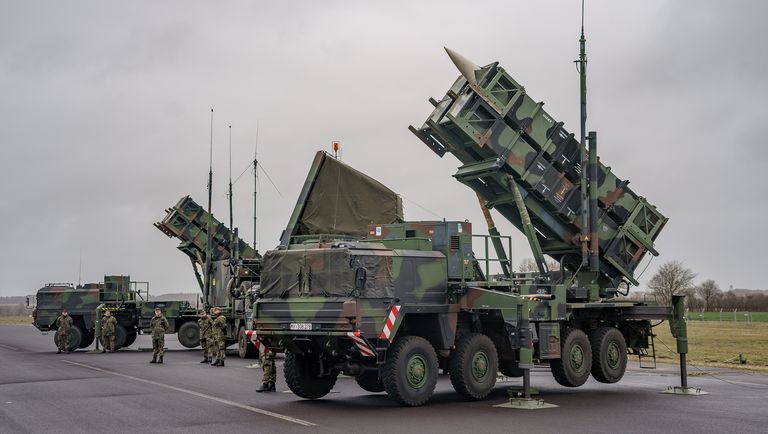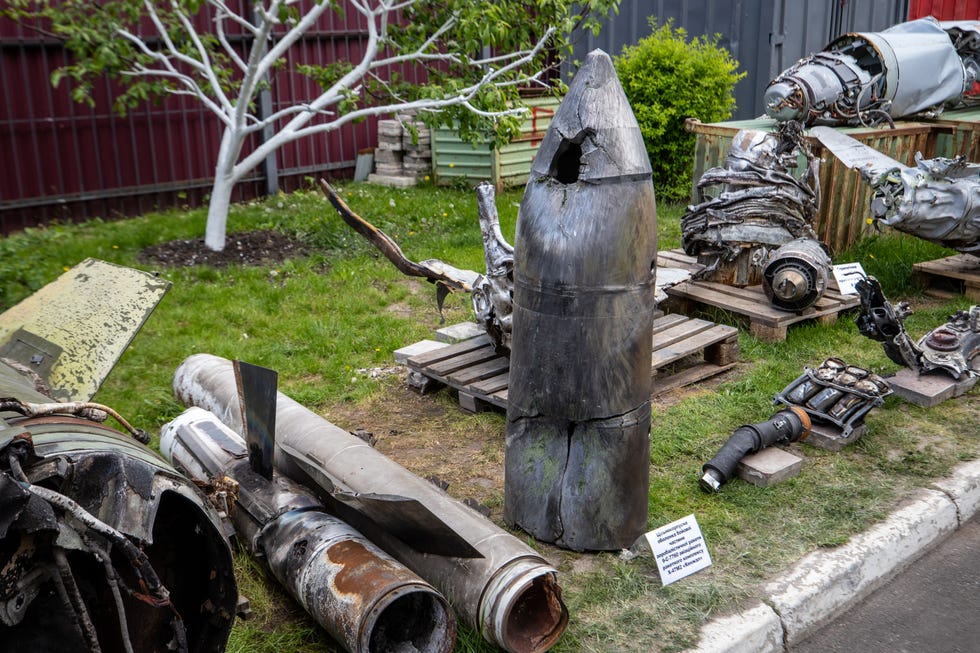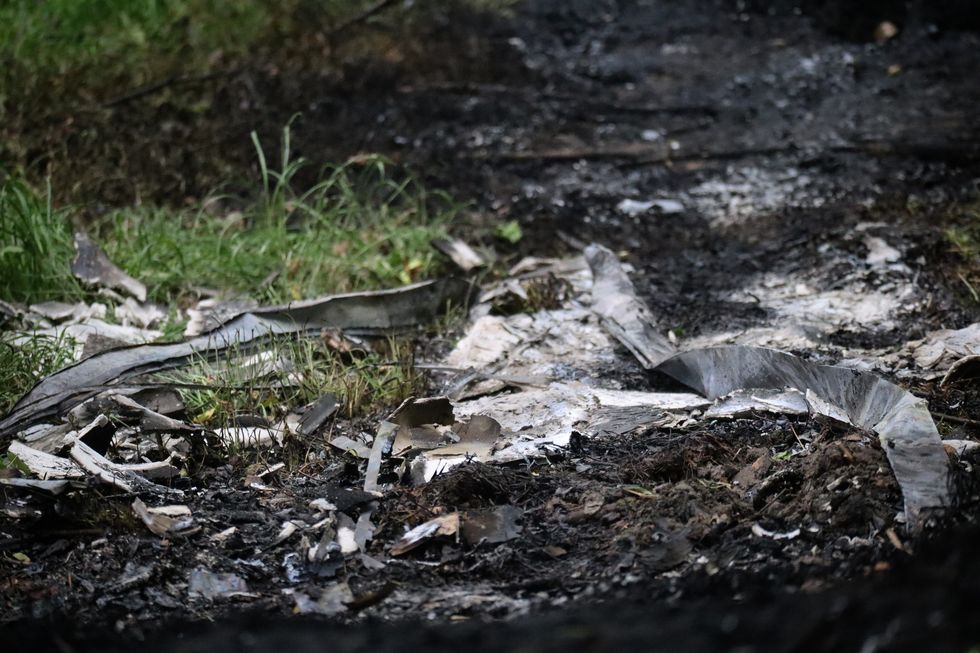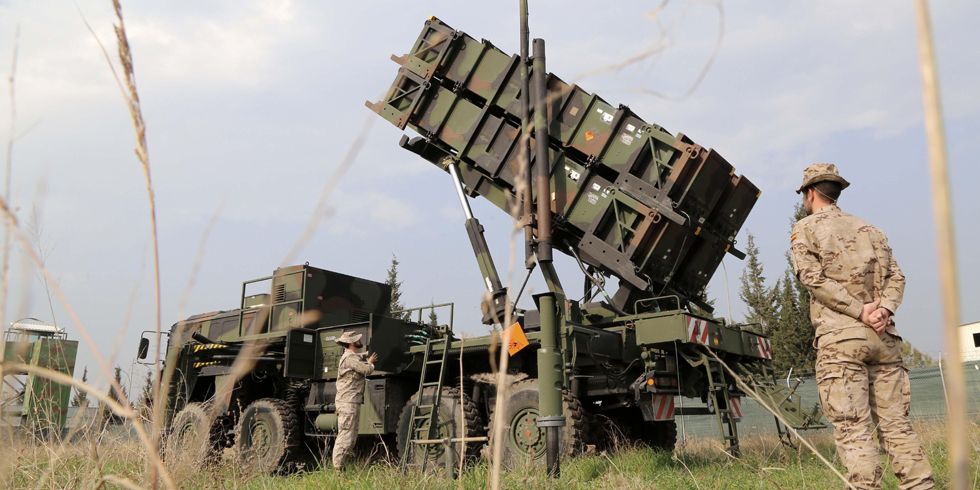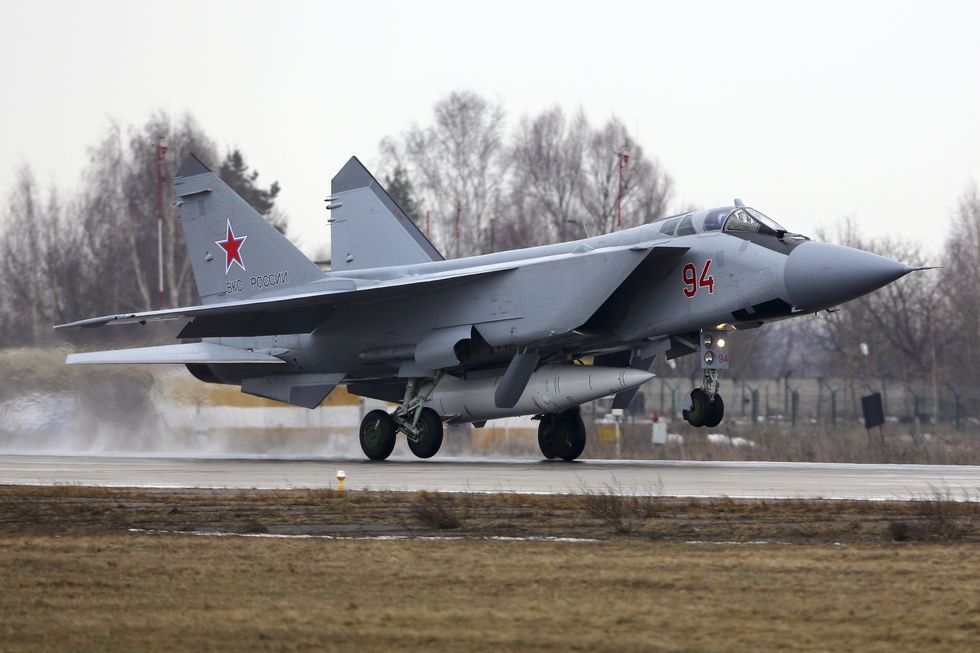On the night of May 15, Russia fired a barrage of drones and missiles at the Ukrainian capital, including six of its newest Kinzhals, which have been hyped up as unstoppable hypersonic weapons.
What happened next is a matter of claim and counter-claim. According to Ukraine, its defenders shot down all 18 incoming missiles during the blitz with the aid of U.S.-supplied Patriot missile systems. According to Russia, all assigned targets were hit—including one of the Patriots, reportedly struck by a Kinzhal.
Both sides have made inflated claims in the past, and so far there is little solid evidence to confirm either story. However, unnamed U.S. officials told Reuters that one Patriot system had indeed been damaged, but not destroyed, and they were awaiting a full assessment. The current evaluation, according to sources quoted in CNN, was that the damage was “minor,” and the system would not need to be removed for repairs.
So, what really happened?
The First Casualty
The confusion is not surprising. Jeffrey Lewis, Ph.D, of the James Martin Center for Nonproliferation Studies in Monterey, California, and the founding publisher of ArmsControlWonk.com tells Popular Mechanics that there are a number of confounding factors, not least of which is the old adage that “truth is the first casualty” in war.
“In 1991, the United States said it had intercepted all of [Saddam Hussein’s] missiles [during the Gulf War]. We later found out that wasn’t true,” Lewis explains. “I would expect the Ukrainians to assert that they intercepted all of Russia’s missile attacks. There is no reason to do Putin’s battle damage assessment for him.”
Secondly, the Ukrainians themselves do not necessarily know what happened. Their information comes from what they saw on the radar screen during the Patriot PAC-3 missile intercept.
“PAC-3 will report that it intercepted a missile, but it doesn’t really know. All it knows is whether it tracked something and got close enough to destroy it. Did it track the right thing? Did it actually destroy it?” says Lewis. “All it can tell is whether it thinks it flew out to the thing the radar said and hit it.”
The situation is further complicated by the fact that the Kinzhal, like the Iskander missile from which it derived, carries decoys. We know this from the wreckage of a Kinzhal from a previous strike in May, which Ukraine shot down and put on show. The decoys are released at high altitude and intended to look like incoming missiles. While the Patriot operators may believe they can distinguish the decoys from the real thing, the only way to be sure is to collect debris—not easy in a city which has already endured many missile strikes.
Damage Report
Equally, we do not know how the Patriot system was damaged. It seems unlikely to have taken a direct hit from a Kinzhal, which carries a one-ton explosive warhead. The missile may have been successfully intercepted, but due to its mile-a-second speed, some of the debris struck the target area. Such high-velocity metal fragments will punch right through anything which is not heavily protected.
The complete Patriot system comprises several launchers, radar systems, the engagement control system (a truck packed with computers), and a generator truck with two 150-kilowatt generators, plus support vehicles. A shower of shrapnel might have caused inconvenient but repairable damage to any of these elements.
And while Russia would like to claim credit for the Kinzhal, supposedly the most advanced weapon in its current arsenal, in reality it may have little idea what caused the damage. Ukraine may have even inadvertently hit its own Patriot system with a malfunctioning air defense missile from another launcher, which has previously caused “friendly fire” casualties in this conflict.
Lewis warns that we should not get too hung up on forensic details of the one incident.
“None of this really matters,” says Lewis. “The question is how much defense, over time, do these systems provide and at what cost? Any single engagement doesn’t really answer the question of whether the systems are providing a significant measure of defense at a good cost or whether those resources should be spent on other capabilities. One hit or miss is just an anecdote.”
Lewis says that we need solid statistical evidence to show whether Patriots are really intercepting Kinzhals and with what success rate. Some witnesses claim that dozens of missiles were launched during the attack.
“The most important task is to press the [United States government], over time, to collect careful data that can be independently evaluated, to see if these systems are working well or not,” says Lewis.
The ratio of how many missiles were incoming against how many interceptors were needed to bring them down will be important for defense analysts. And even more important to the people of Kyiv: do they have enough Patriots to stop everything that Russia lobs at them?
Meanwhile, Putin is probably listening to his military give its version of how effective the Kinzhal is—and deciding who to blame.
The Next Round
As for what happened on May 15, we are still waiting for hard evidence of what exactly was shot down, and details about the damage on the ground. A U.S. official told Reuters that they would have a better understanding in the coming days and “information could change over time.”
Russia reportedly has very few Kinzhals, hence its reliance on cheap Iranian drones to bombard Ukraine. But Moscow certainly holds a few more in stock, and there are likely to be further rounds on the contest of Patriot vs. Kinzhal.
